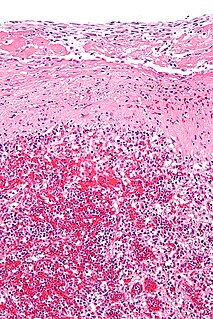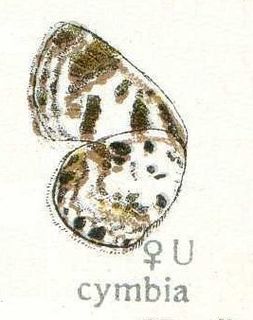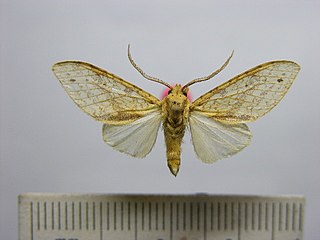| Syntrita nimalis | |
|---|---|
| Scientific classification | |
| Kingdom: | |
| Phylum: | |
| Class: | |
| Order: | |
| Family: | |
| Genus: | |
| Species: | S. nimalis |
| Binomial name | |
| Syntrita nimalis (Schaus, 1924) | |
| Synonyms | |
| |
Syntrita nimalis is a moth in the family Crambidae. It was described by William Schaus in 1924. It is found in Bolivia. [1]

Moths are a polyphyletic group of insects that includes all members of the order Lepidoptera that are not butterflies, with moths making up the vast majority of the order. There are thought to be approximately 160,000 species of moth, many of which have yet to be described. Most species of moth are nocturnal, but there are also crepuscular and diurnal species.

The Crambidae are the grass moth family of lepidopterans. They are variable in appearance, the nominal subfamily Crambinae taking up closely folded postures on grass stems where they are inconspicuous, while other subfamilies include brightly coloured and patterned insects which rest in wing-spread attitudes.
William Schaus was an American entomologist who became known for his major contribution to the knowledge and description of new species of the Neotropical Lepidoptera.
The wingspan is about 20 mm. The forewings are thinly scaled iridescent grey brown, the base darker and with two small spots antemedially in the cell, and with two streaks medially, with whitish shades around them. There is a darker streak on the discocellular, somewhat divided by a whitish line. There is a subterminal broad white line from the costa to vein 5. There is whitish shading terminally, and small brown spots on the interspaces. The hindwings are semihyaline white, the costal margin and the termen broadly greyish brown, crossed by a wavy subterminal white line. There is a terminal white line. [2]

The wingspan of a bird or an airplane is the distance from one wingtip to the other wingtip. For example, the Boeing 777-200 has a wingspan of 60.93 metres, and a wandering albatross caught in 1965 had a wingspan of 3.63 metres, the official record for a living bird. The term wingspan, more technically extent, is also used for other winged animals such as pterosaurs, bats, insects, etc., and other aircraft such as ornithopters. In humans, the term wingspan also refers to the arm span, which is distance between the length from one end of an individual's arms to the other when raised parallel to the ground at shoulder height at a 90º angle. Former professional basketball player Manute Bol stands at 7 ft 7 in (2.31 m) and owns one of the largest wingspans at 8 ft 6 in (2.59 m).

A hyaline substance is one with a glassy appearance. The word is derived from Greek: ὑάλινος, romanized: hyálinos, lit. 'transparent', and ὕαλος, hýalos, 'crystal, glass'.







